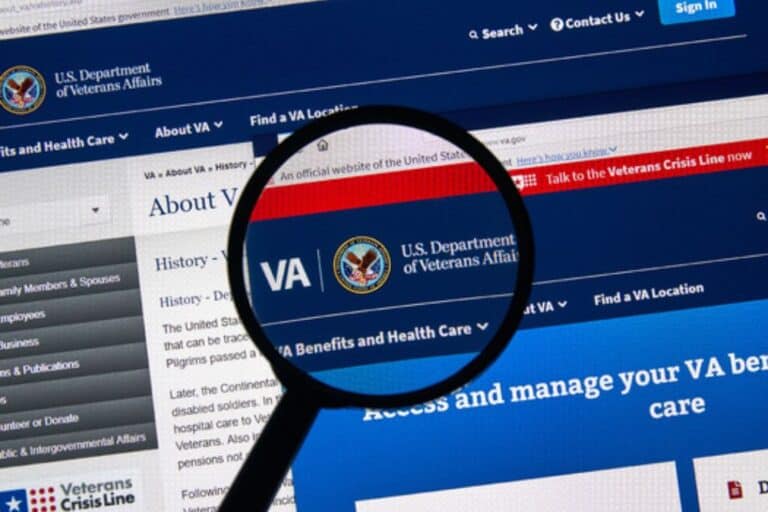Access Without Barriers: VA’s Telehealth Expansion Puts Veterans First
The VA’s telehealth game isn’t just growing — it’s transforming.
According to a recent Military.com report, in fiscal year 2025 more than 2.1 million veterans participated in over 7.7 million episodes of VA telehealth care, a 12% increase over last year. Services now extend well beyond video doctor visits: they include primary care, specialty consults, mental health sessions, medication management, and integrative wellness programs like tele-yoga and guided meditation.
New innovations like ATLAS (Accessing Telehealth through Local Area Stations) are helping bridge the digital divide. ATLAS provides secure telehealth booths in community centers, libraries, and VFW halls — places veterans can go if they don’t have good internet at home.
The VA is also moving toward eliminating copays for telehealth visits and rolling out grants to expand community access points. The goal? Remove cost and geography as barriers.
Why It Matters for Disabled Veterans …
- Geography and Mobility Don’t Hold You Back:
Veterans in rural areas or with mobility limitations often face long drives or inaccessible clinic facilities. Virtual options and ATLAS sites mean many care barriers are being removed.
- Mental Health Gets More Accessible:
Much of the telehealth expansion includes mental health and group counseling — critical for veterans who may delay or skip care due to stigma or distance.
- Whole-Person and Preventive Care:
Wellness tools like remote monitoring, yoga, nutrition, sleep therapy are now part of the mix — not just reactive medicine. That means better long-term outcomes for chronic pain, PTSD, anxiety.
- Cost Barriers Lowered:
Eliminating copays, removing travel costs, reducing time off work — these matter more than many vets realize, especially those on tight incomes or dealing with extra health burdens.
Veterans’ Voices and Real Life Impact
Gwen McMillian, a communications specialist and veteran in Wickenburg, Arizona, volunteers at her local ATLAS booth. She shared how ATLAS helps veterans in her area avoid a one-hour drive to Phoenix for appointments: “It brings remote access for Veterans in Wickenburg, so they don’t have to travel …”
Victoria Backus, another veteran, said telehealth saved her ability to stay consistent in care: needing multiple buses just to reach the clinic made it tough, so VA Video Connect became a lifeline.
Satisfaction and trust numbers are high. Among veterans using telehealth this year, over 90% say they are satisfied, and nearly 89-93% report trusting telehealth services. Those are not trivial numbers — they show this isn’t just stopping the bleeding, it’s building credibility.
What Disabled Veterans Should Do Now
- Talk to your care team about telehealth options. Ask if your specialty or treatment is available virtually — check both home video options and community booths (ATLAS).
- Learn about support for digital access. The VA loans tablets, partners with community centers. If poor internet or tech is a hurdle, ask your local VAMC what support is available.
- Monitor changes to copays and costs. If the proposal to eliminate telehealth copays passes, that could save money — if it’s implemented in full. Stay updated.
- Be proactive in feedback. If you’ve had telehealth appointments — good or bad — share your experience with your VA clinic or the connected care office. Your voice shapes what works and what needs fixing.
Final Thoughts …
Telehealth expansion isn’t just about adding video calls. It’s about changing the foundation of how VA delivers care: shifting from “you come to us” to “we come to you.” That shift matters especially for disabled vets — where distance, mobility, cost, and tech aren’t abstract issues, they’re everyday barriers.
The VA’s effort to put veterans first through these telehealth tools is promising. But promises are only as good as their outcomes. As usage climbs, access points open, and trust grows, there’s a chance to make this transformation permanent.
Let’s keep pushing for that future.
For more veteran-first healthcare updates, visit DisabledVeterans.org.







Healthcare without barriers has shit to do with an app, shit to do with money, shit to do with anything other than getting rid of this derelict system of insubordinate incompetents denying care for medically necessary procedures. We need to be able to sue these people easily and we can’t do that while they fall under the USA government. Also people’s rights aren’t being upheld as our political system breaks down. Thank you SCOTUS. Several of them should be ripped off the bench and thrown into a sewer.
Or just use AI and not have to mess with a bunch of incompetents who are mentally ill and should be picking strawberries instead of working in a healthcare system. They’ve fucked over hundreds of thousands by now. It’s an absolute disgrace and embarrassment to the country. Hopefully Hilter fires 250 thousand people and it implodes.